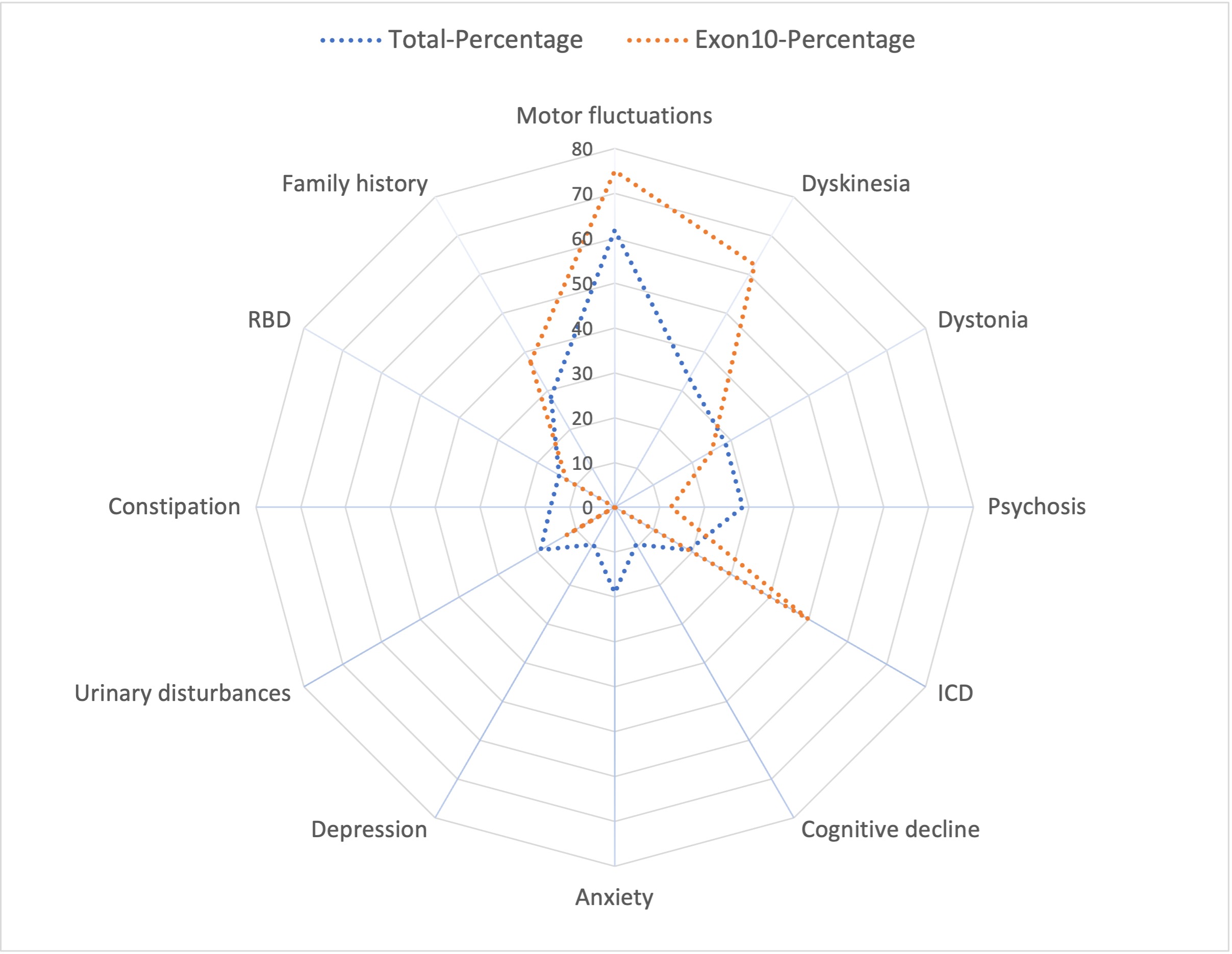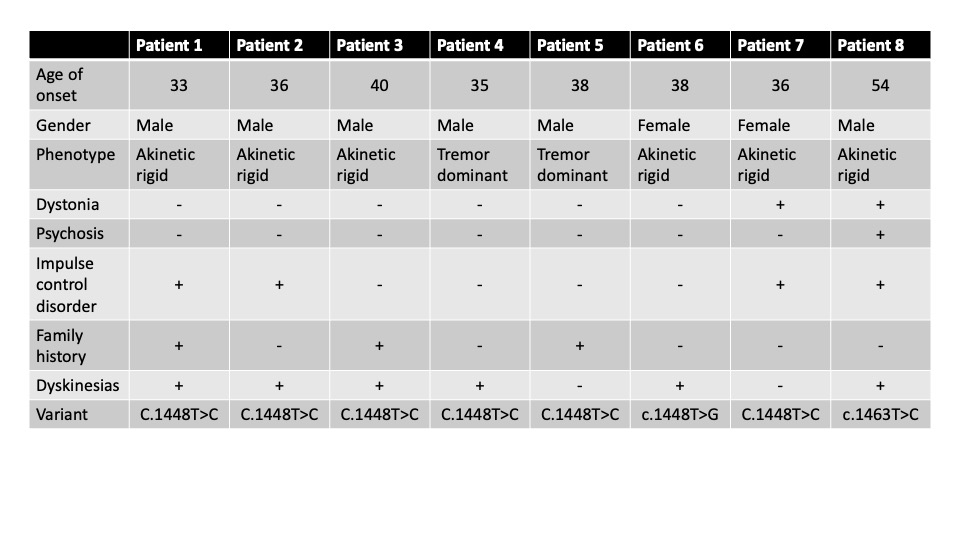Category: Parkinson's Disease: Genetics
Objective: To describe the clinico-genetic association of PD patients with heterozygous GBA mutations (PDwG).
Background: Parkinson’s disease (PD) is currently understood to be the outcome of interactions between several factors including genetic and environmental factors. Genes that increase the susceptibility to PD such as GBA are associated with atypical features such as rapid progression, psychosis and cognitive decline.1,2 However these associations are poorly described in the Indian population
Method: Through chart review, the demographic, clinical data and genetic data of PDwG were reviewed and analysed.
Results: Out of 200 PD patients, 21(10.5%) were identified to have GBA mutations by performing exam sequencing. The mean age at onset (AAO) for PDwG was 39.33 yrs, 91% had AAO <50 yrs. The average age at presentation for PDwG was 44.14 yrs (range = 28-60 yrs) with a mean duration of 4.8 yrs of illness. The male-to-female ratio was 2.5. Family history of parkinsonism/dystonia was present in 28.5%. None of the patients had family history of Gaucher’s disease. In addition to parkinsonism, other symptoms were also reported (Figure 1). One patient reported impulse control disorder (ICD) at initial presentation. In follow-up, this increased to 19%.
Akinetic-rigid phenotype (71%) was more common than tremor-dominant (19%). The average UPDRS-III in the OFF state was 41 and in the ON state was 17.5. Cognitive assessment scores were available in eight patients and average MOCA score was 24.
All, except one patient, had heterozygous missense mutations (Figure 2). Eight (38.09%) of the missense mutations were novel mutations. Exon10 missense mutations were the commonest (38.09%). Patients with exon 10 mutations had increased predilection for dyskinesias and ICD (Figure 1, Table1). Three of these patients underwent DBS with good outcomes. No association between variant and age at onset, dystonia, cognitive decline, psychosis or phenotype was present
Conclusion: GBA mutations are more prevalent in the Indian PD population than previously considered. The patients in our cohort exhibited additional motor features such as dystonia, dyskinesias and non-motor features like autonomic dysfunction and psychosis.
References: 1. Zhang Y, Shu L, Zhou X, et al. A Meta-Analysis of GBA -Related Clinical Symptoms in Parkinson’s Disease. Parkinsons Dis. 2018;2018. doi:10.1155/2018/3136415
2. Oeda T, Umemura A, Mori Y, et al. Impact of glucocerebrosidase mutations on motor and nonmotor complications in Parkinson’s disease. Neurobiol Aging. 2015;36(12):3306-3313. doi:10.1016/j.neurobiolaging.2015.08.027
To cite this abstract in AMA style:
S. Kamath, V. Holla, P. Phulpagar, N. Kamble, R. Yadav, B. Muthusamy, PK. Pal. Clinico-genetic analysis of patients with Parkinson’s disease and GBA mutations from a tertiary care teaching centre in India [abstract]. Mov Disord. 2023; 38 (suppl 1). https://www.mdsabstracts.org/abstract/clinico-genetic-analysis-of-patients-with-parkinsons-disease-and-gba-mutations-from-a-tertiary-care-teaching-centre-in-india/. Accessed December 12, 2025.« Back to 2023 International Congress
MDS Abstracts - https://www.mdsabstracts.org/abstract/clinico-genetic-analysis-of-patients-with-parkinsons-disease-and-gba-mutations-from-a-tertiary-care-teaching-centre-in-india/



